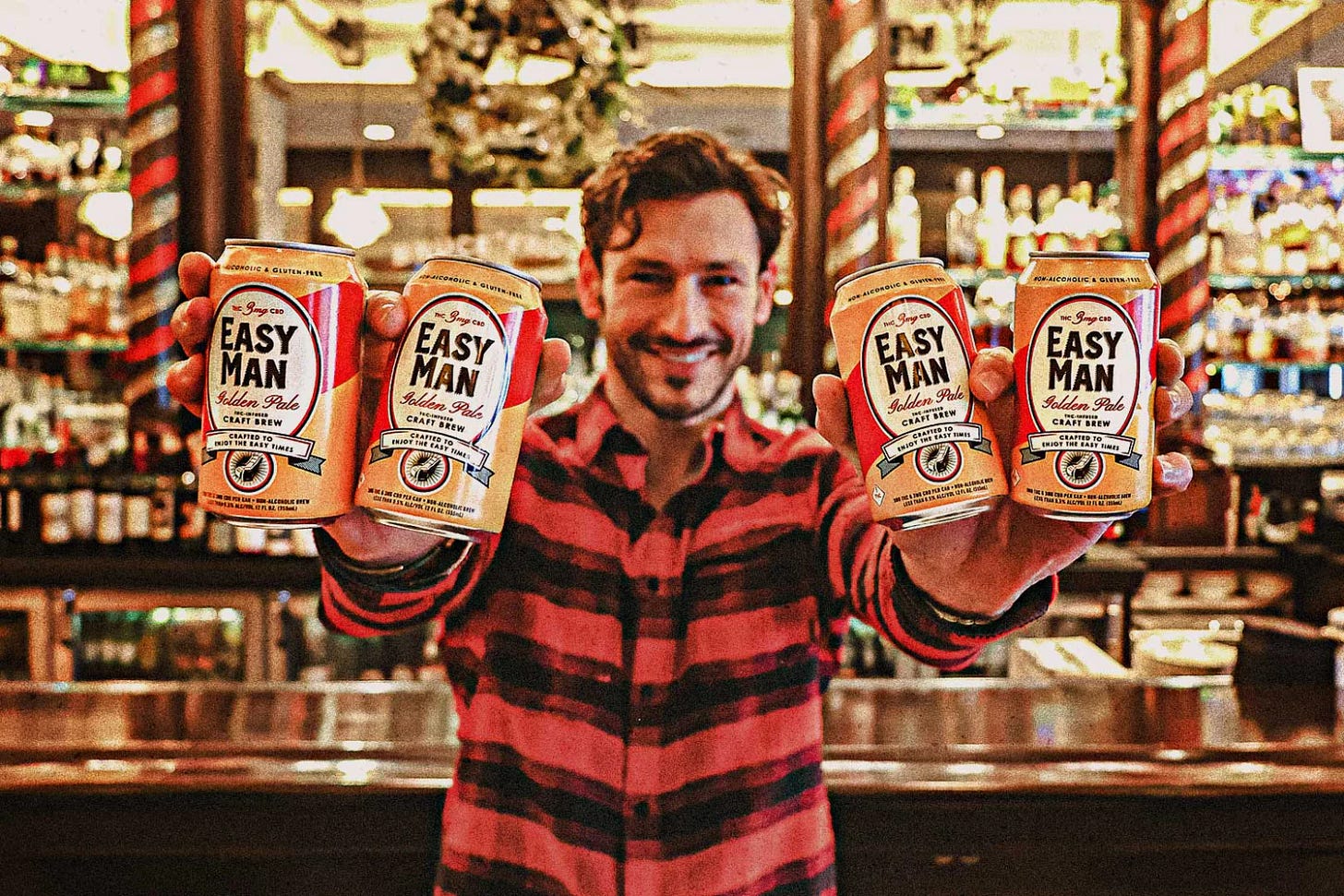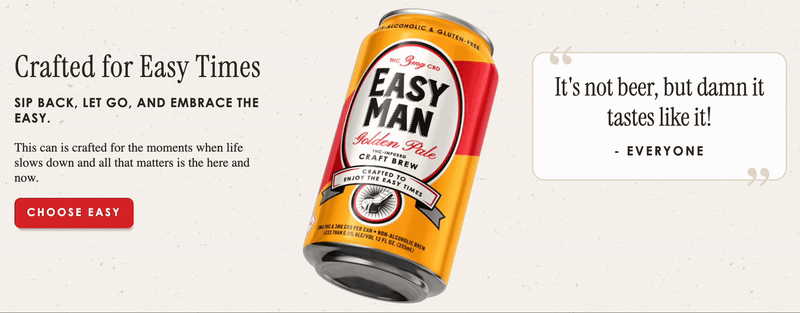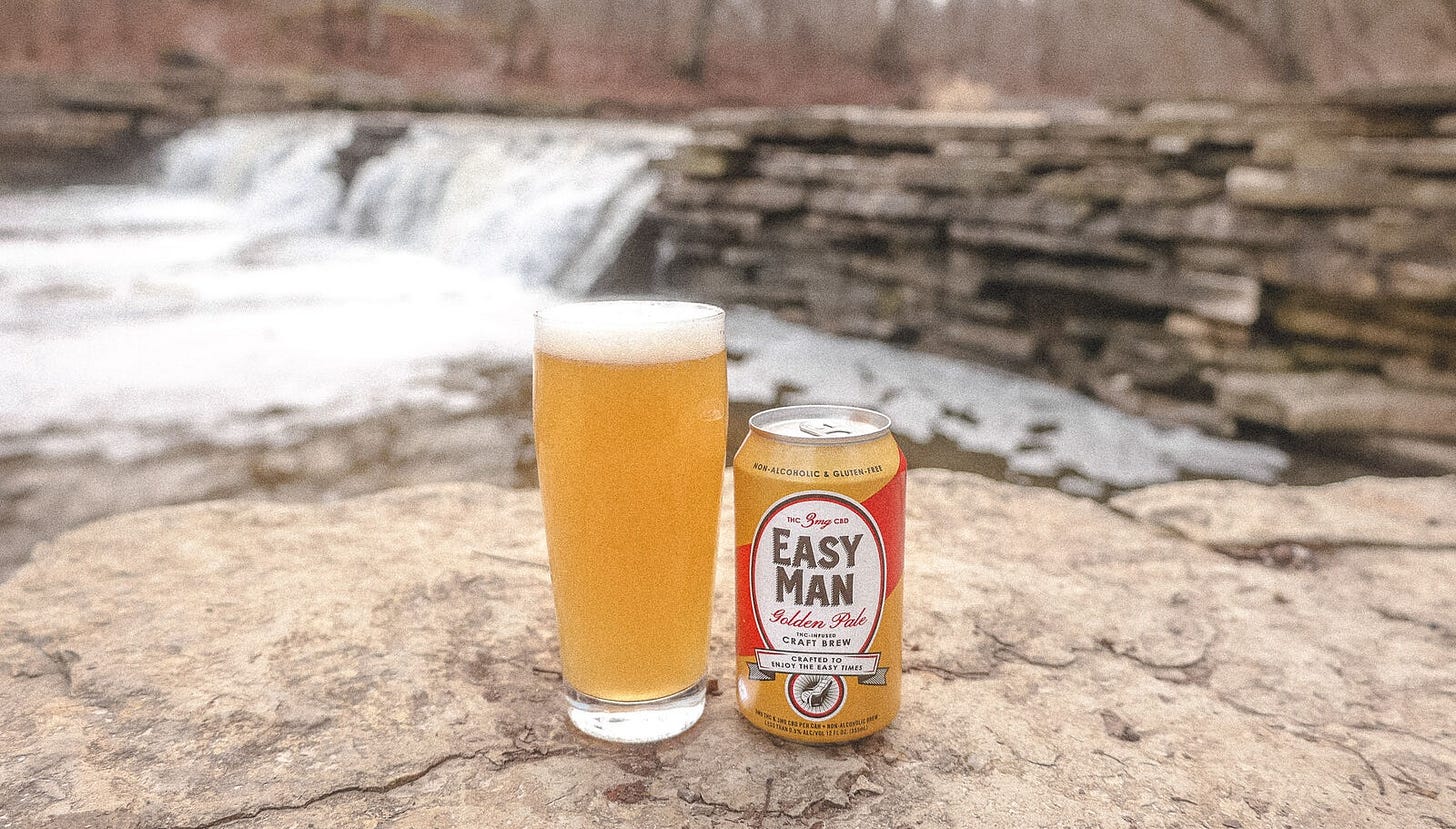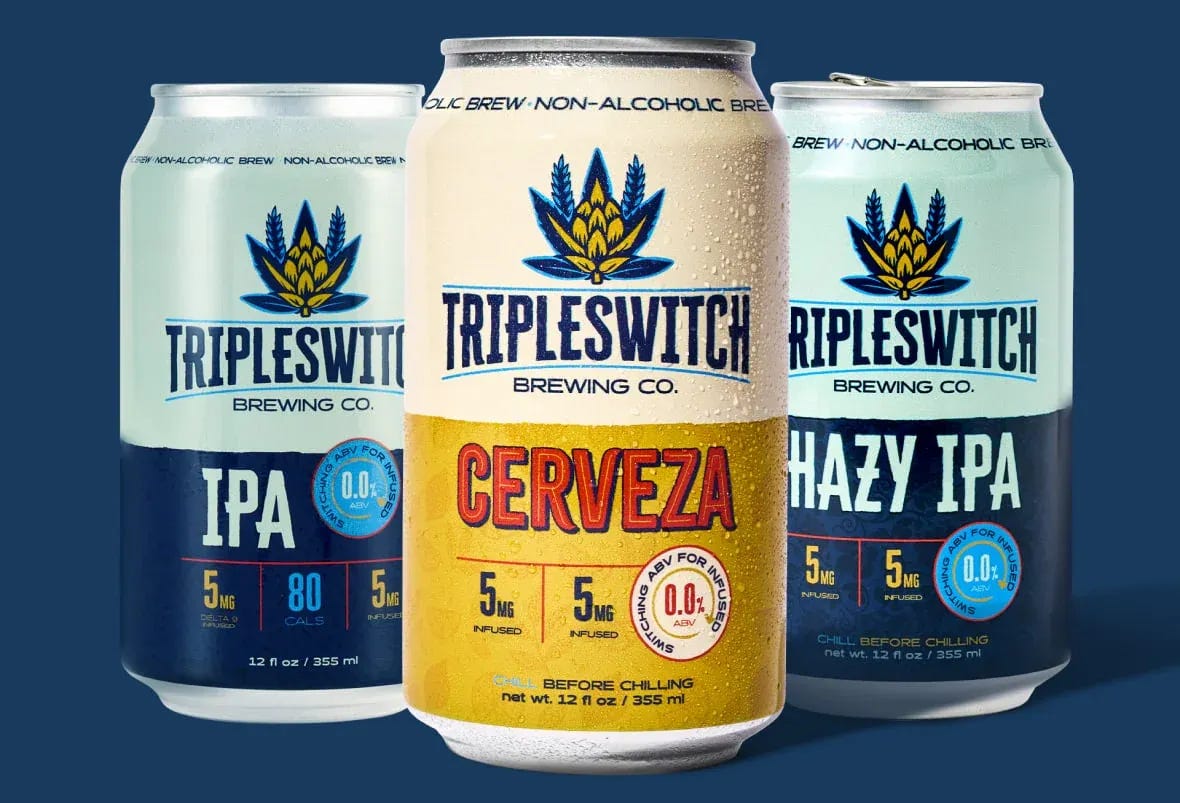THC Beverages are quickly taking on new forms, flavors, and dosages, while marketing to a wide range of tastes and demographics. The formulation that I’ve had my eye on since the beginning is, you guessed it, beer. With beer falling under the Alcohol and Tobacco Tax and Trade Bureau’s (TTB) jurisdiction though, any beverage label seeking the TTB’s approval for interstate commerce is certain to be denied, including non-alcoholic brews listed at the required “Less than 0.5% ABV”. So that’s the end of that conversation, right? Wrong.
When Go Brewing’s (Naperville, IL) founder Joe Chura submitted the label for a new gluten free, NA beer recipe called Freedom West Coast Pale back in 2024, the label was turned away by the TTB. A note accompanied the rejection stating that due to its ingredients, the label did not fall under their authority. To achieve gluten free status, the brew utilized millet, buckwheat, and oats, none of which are considered malt, nor a substitutes for malt by the TTB. Despite the beer-like flavor and composition, regulatory jurisdiction for this product and its labeling would fall under the FDA, just like all the other THC beverage products on the market. Excited to expand into this emerging market, a light bulb went off with Joe and Easy Man was born.
Joe started his career on the assembly line for Ford Motor Company, then sold his technology company to Cars.com for $205M before going on to found Go Brewing in 2021. I had the pleasure of meeting him for the first time back in August and immediately could sense the long term vision and rising tide lifts all boats mentality. In other words, he’s willing to share more than most for the betterment of the ecosystem. So even though we already did a feature on Go Brewing back in September, when I saw the launch of Easy Man, I had to reach back out.
Q&A with Joe Chura
DOUG: “Go Brewing is pretty young still, what made you feel ready to create a completely separate, unaffiliated brand? Was it the desire to legally separate NA Beer and THC that made you want to keep the two brands distanced? Is Easy Man getting any of its own staff, or is everyone who works on Go Brewing (marketing, sales, etc.) also working on Easy Man for now? Do you envision Go Brewing always avoiding THC and letting new brands like Easy Man play in that space? “
The THC space is in a unique position, with what some consider a federal loophole and each state treating hemp-derived THC differently. While I’m optimistic about its future and firmly believe there’s more than a place for regulated THC in the U.S., the reality is that the landscape is unpredictable. Politics and big money can influence legislation overnight, so I thought it was wise to hedge our bets.
From a technical perspective, incorporating THC into Go Brewing’s operations wasn’t feasible. We sell online, and platforms like Shopify, including its payment system Shop Pay, don’t support THC products. Additionally, many of our ads run on platforms like Meta and Google, which prohibit THC-related advertising outright. Creating a separate brand like Easy Man allows us to navigate these restrictions while exploring this emerging space.
When it comes to staff, one of the biggest advantages of producing our own product is the flexibility it gives us. With our investments in Craftsmith and Go’s facility, we’ve built an innovation platform that allows us to test a variety of products quickly and efficiently. Our ability to gauge the market through DTC adds another layer of agility. While we have fixed costs, this setup lets us create and experiment with different offerings to get ahead of market trends. In that spirit, we plan to make a few strategic moves with other new NA products this year and build up what we’ve created on Amazon as one of our initiatives.
Doug: What was the discussion like or strategy behind including a gender in the name? Are you trying to go after a more specific demographic with this brand or is the hope and marketing plans to still make women interested in by positioning “man” in the more gender neutral way? I noticed that the second photo on the website is with a woman holding the can, so I was curious of any backstory there.
It’s funny because the name actually has little to do with a man. My colleague Erin, who I’ve worked with for over a decade, recently said to me, ‘Take it easy, man, I got this,’ after I was maybe a little too anxiously double-checking something was going to get done. That moment stuck with me and inspired the name.
When I think of names, I have a litmus test: Is it easy to say? Is it easy to spell? Are there competing search terms? Is the domain available? The trademark? And most importantly, what feeling does it evoke? While I knew the name could be interpreted as gendered, I also recognized that a little polarization isn’t necessarily a bad thing—it can spark curiosity and attention. Once people hear the origin story, they might (or might not) realize there’s more to it than meets the eye.
It’s also a bit of a juxtaposition to Go. While I love our hard-charging, ambitious mindset, there are moments when I need to tell my monkey mind to chill the f out. Easy Man is crafted to help with that, delivering the same quality and taste people expect from Go but with a more relaxed vibe.
Doug: I noticed no social media yet?
We’re thinking outside the box with Easy Man and creating a unique social presence. I think you’ll get a kick out of it as we’re focusing more on the feeling we want people to get rather than product shots and status quo.
Doug: What’s the #1 strategy in planning for getting people to become aware of Easy Man? (besides being featured on the #3 Beer Blog/Newsletter in North America :P )
You said it. This blog for sure (oh, and did I mention you can get $5 off your first order? 😏).
One thing we’ve done really well at Go—among the many lessons learned over the past year—is building a strong and engaged audience. As a starting point, we plan to cross-promote to that audience we’ve cultivated. Last year alone, we sold to over 50,000 online customers, many of whom are trusted repeat buyers who consistently engage with our emails and content.
From there, we’re taking a methodical approach: starting with performance marketing and gradually expanding into distribution. Since this is an isolated brand, I’m especially excited to dive into contribution margin analysis and double down on direct-to-consumer efforts. When we eventually move into distribution, the plan is to allocate spend strategically—right at the retail point of purchase—and stay laser-focused on quality and a variety of styles.
Competition
At least one other start-up brand called Triple Switch Brewing Co. has also created THC-infused NA “Beer”, with theirs having the following notable differences that I’ve seen:
Three 3 flavors: IPA, Hazy IPA, and Cerveza.
5MG THC/CBD dosage compared to Easy Man’s “low dose” of 3MG
Unlike Easy Man which notes “Less than .5% ABV/Vol” on the label, a standard requirement for NA Beer, Tripleswitch boasts 0% on the front face of the can “switching ABV for infused”. That could indicate a different process from most typical NA beers, if they truly avoid even the slightly presence of alcohol.
Tripleswitch uses the word Beer (vs Brews) more liberally, with the tagline “Get High On Beer” utilized on their website.
The ingredients include Malt, touting a “traditional European pale malt blend” on the website for their IPA.
It Won’t Be Easy, Man
But what is these days? As the hemp-derived THC beverage industry takes shape, more brands like Easy Man and Tripleswitch will target the beer occasion. Creating recipes that satisfy beer lovers, while closing the education gap and navigating the complex regulatory environment, will continue to be a challenge.
Joe Chura's strategy of building separate identities for Go Brewing and Easy Man highlights the importance of flexibility in this emerging market, allowing Go Brewing to tap into the growing demand, without compromising its core brand’s integrity. With more states exploring regulations for Delta-9 beverages, THC-infused “brews” will continue to enter the chat and become a focus for innovation. Whether you're a beer enthusiast, cannabis advocate, or curious about the space, it’s a fascinating time to watch how new brands will shape the conversation.











Doug, one of the quesions I have had about relatively recent new categories like hard selzer, THC infused beverages, etc is whether there is the ability of a producer to stand out from competitors based on quality/talent. In beer, there are some brewers that are just incredibly talented at their craft and the brand's strength and customer loyalty is based in large part around that quality/talent. Do these new categories afford producers an opportunity to show off how good they are as "brewers" and separate themselves from other brands within these new categories?